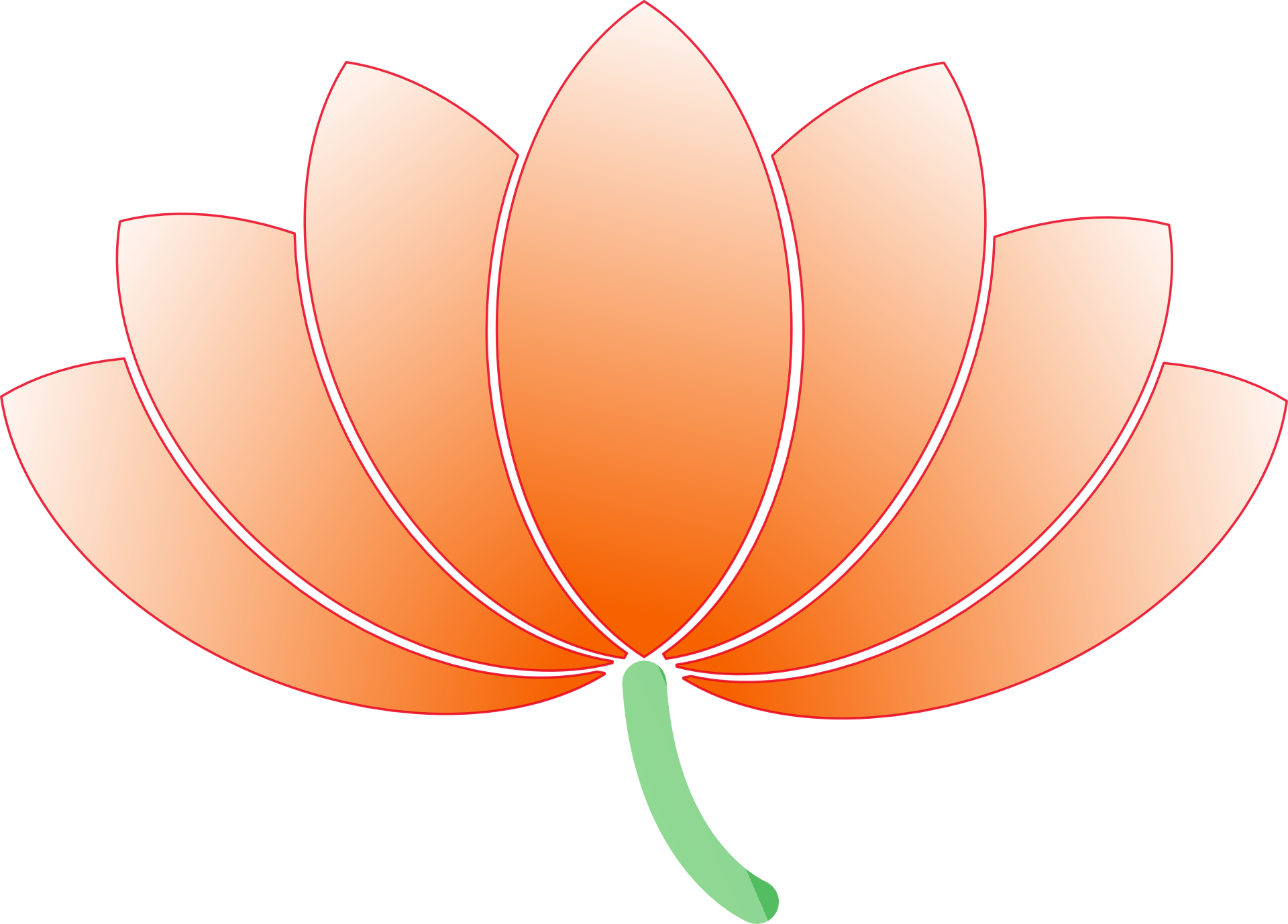
In 1955, kārtika-vrata niyama-sevā and the eighty-four kosa Vraja-maṇḍala parikramā were brought to a successful conclusion under the guidance of Śrī Gauḍīya Vedānta Samiti. Some of Śrīla Prabhupāda’s most learned sannyāsī disciples came from other Gauḍīya Maṭhas after the parikramā and assembled at Śrī Keśavajī Gauḍīya Maṭha in Mathurā to meet with Śrī Gurudeva. In addition, some of Śrīla Prabhupāda’s senior sannyāsīs and brahmacārīs had already been with Śrī Gurudeva during the parikramā. Consequently, since so many godbrothers had come together in one place, a special iṣṭagoṣṭhī took place in which many prominent sannyāsīs and brahmacārīs were present, along with Śrī Gurudeva. They included prapūjya-caraṇa Śrī Śrīmad Bhakti Rakṣaka Śrīdhara Mahārāja, Śrī Śrīmad Bhakti Bhūdeva Śrauti Mahārāja, Śrī Śrīmad Bhakti Vicāra Yāyāvara Mahārāja, Śrī Śrīmad Bhakti Dayita Mādhava Mahārāja, Śrī Narottamānanda Brahmacārī (Śrī Śrīmad Bhakti Kamala Madhusūdana Mahārāja), Śrī Mahānanda Brahmacārī (Śrī Śrīmad Bhakti Āloka Paramahaṁsa Mahārāja), Śrī Śrīmad Bhakti Vikāśa Hṛṣikeśa Mahārāja, Śrī Śrīmad Bhakti Vijñāna Āśrama Mahārāja, Śrī Śrīmad Bhakti Prāpaṇa Dāmodara Mahārāja and Śrī Śrīmad Bhakti Jīvana Janārdana Mahārāja.
The youngest in that assembly, Śrīpāda Bhakti Vikāśa Hṛṣikeśa Mahārāja, was very inquisitive about tattva. Full of humility, he folded his hands and said, “For a long time I have had a doubt about the svarūpa of the jīva. I have scrutinized many Gosvāmī literatures, and I have also asked my senior godbrothers, but so far my doubt has not been dispelled. In Sanātana-śikṣā in Śrī Caitanya-caritāmṛta (Madhya-līlā 20.108) it is stated that the jīva is Kṛṣṇa’s nitya-dāsa and has manifested from Kṛṣṇa’s taṭasthā-śakti:
jīvera ‘svarūpa’ haya — kṛṣṇera ‘nitya-dāsa’
kṛṣṇera ‘taṭasthā-śakti’ ‘bhedābheda-prakāśa’
“From this verse it seems that the quality of being the servant of Kṛṣṇa is eternally latent in the very constitution of the living being. Consequently his service, his name, his form and so on must be present in some form or other in his constitutional nature, which is now covered by māyā. However, it can also be said that, since the jīva is a transformation of taṭasthā-śakti, his svarūpa should also be taṭasthā:
guru-kṛṣṇa-prasāde pāya bhakti-latā-bīja
By the mercy of guru and Kṛṣṇa the living being receives the seed of the bhakti creeper.
(Śrī Caitanya-caritāmṛta, Madhya-līlā 19.151)
From this point of view it seems that the jīva is constitutionally an infinitesimal particle of consciousness who obtains the bhakti-latā-bīja by the mercy of guru and Kṛṣṇa. In that case, the nature of his perfected condition will be in accordance with the nature of the seed he receives.
“Śrīla Narottama dāsa Ṭhākura also supports this idea in Śrī Prema-bhakti-candrikā:
sādhane bhābiba jāhā siddha-dehe pāba tāhā
rāga pathera ei se upāya
This verse informs us that perfection will be in accordance with whichever type of sādhana is practised.
“Superficially, it seems that there are two contradictory points of view. Is it that some specific service tendency is eternally present in the eternal form of the jīva, and that perfection is attained accordingly? Or is it that one’s method of devotional practice determines the perfected condition that one finally attains? Please, kindly clear up my confusion in this matter.”
When prapūjya-caraṇa Yāyāvara Mahārājajī heard this question, he became overjoyed and humbly requested pūjyapāda Śrī Śrīmad Bhakti Rakṣaka Śrīdhara Mahārāja to answer. Prapūjya-caraṇa Śrīdhara Mahārāja was highly knowledgeable in the Vaiṣṇava scriptures and was an erudite philosopher. He began to answer this profound question.
“The nature of the living entity is compared to an atomic conscious particle of the spiritual sun, Śrī Kṛṣṇa. The living being has been described in the Gosvāmī literatures as the vibhinnāṁśa-tattva of brahma. The meaning of vibhinnāṁśa-tattva is that when Bhagavān, who possesses the potency to make the impossible possible (aghaṭana-ghaṭana-paṭīyasī śakti), is equipped only with His atomic conscious jīva-śakti, then His expansion (aṁśa) is called a vibhinnāṁśa jīva. However, when that same Bhagavān is replete with all of His potencies, then His expansion is called svāṁśa. Thus the vibhinnāṁśa jīvas are eternal. It is certain that their methods of bhagavat-sevā, and their names, forms and so on are inherent. Yet the jīva’s transcendental form and characteristics remain concealed because he is covered by māyā. By the grace of Bhagavān, one’s inherent svarūpa becomes manifest as one performs bhajana in the company of saintly persons (sādhus) and becomes freed from māyā. It is also certain that, unless one has sādhu-saṅga, release from māyā and the manifestation of the svarūpa are both quite impossible. For this reason, sādhu-saṅga is absolutely essential.
“It is inconsistent to suppose that the svarūpa of the jīva manifests according to the type of sādhu-saṅga one has. For example, not even the association of Śrī Caitanya Mahāprabhu and His associates could change the hearts of Anupama Gosvāmī and Murāri Gupta. Murāri Gupta is considered to be Hanumān, Śrī Rāmacandra’s associate. Śrīman Mahāprabhu pointed out to him that Śrī Kṛṣṇa is adorned with more sweetness than Śrī Rāmacandra, and furthermore that Śrī Kṛṣṇa is also the origin of all incarnations (avatārī). After hearing from Mahāprabhu, Murāri Gupta vowed to give up Śrī Rāmacandra and to perform kṛṣṇa-bhajana.
“But when he came before Śrī Mahāprabhu the next day he began to cry, saying, ‘I took a vow before You to worship Śrī Kṛṣṇa, but I could not sleep the whole night. On the one hand, I have offered my head at the feet of Śrī Rāmacandra and I cannot leave Him. On the other hand I cannot transgress Your order. Either way, I cannot continue living.’ As he spoke he fell down at Śrī Mahāprabhu’s feet. Śrīman Mahāprabhu lifted him up and embraced him, saying, ‘You are so fortunate; you are an eternal associate of Śrī Rāmacandra. The way in which you are serving Him is auspicious for you. I am overflowing with joy to see your ecstatic sentiments.’
“Later on, when Śrī Caitanya Mahāprabhu was in Śrī Raṅgam during His tour of South India, He met with Śrī Vyeṅkaṭa Bhaṭṭa, Śrī Trimalla Bhaṭṭa, Śrī Prabodhānanda Sarasvatī and Vyeṅkaṭa Bhaṭṭa’s son Gopāla Bhaṭṭa. Śrīman Mahāprabhu quoted from Śrīmad-Bhāgavatam and other scriptures regarding the supremacy of the sweetness of Śrī Kṛṣṇa’s form and other attributes. He proved the pre-eminence of Vrajendra-nandana Śrī Kṛṣṇa’s loveliness, and consequently their hearts were changed. They accepted initiation in the kṛṣṇa-mantra and they all became engaged in serving Kṛṣṇa, following the sentiments of Vraja.
“One noteworthy point here is that, according to our Gosvāmīs, Śrī Prabodhānanda Sarasvatī is Tuṅgavidyā Sakhī in vraja-līlā and Gopāla Bhaṭṭa Gosvāmī is Śrī Guṇa Mañjarī. For pastime purposes, they both appeared in South India and were performing their sādhana-bhajana after accepting initiation in the Śrī sampradāya, but constitutionally, they were gopīs of Vraja. Although they had already been initiated into the Śrī sampradāya, they were attracted to the service of Śrī Kṛṣṇa by the influence of Śrīman Mahāprabhu’s association.
“Śrī Rūpa and Sanātana similarly told their younger brother Śrī Vallabha, also known as Anupama, about the beauty and sweetness of Śrī Kṛṣṇa’s svarūpa and the ultimate superiority of His loving dalliances, His prema-vilāsa. They also advised him to perform kṛṣṇa-bhajana. Anupama was very much influenced by his brothers’ words and took dīkṣā in the kṛṣṇa-mantra, expressing the desire to perform kṛṣṇa-bhajana. However, early the next morning he fell crying at their feet and said:
raghunāthera pāda-padma chāḍāna nā yāya
chāḍibāra mana haile prāṇa phāṭi’ yāya’
Śrī Caitanya-caritāmṛta (Antya-līlā 4.42)
I have sold my head at the feet of Śrī Raghunāthajī. Please be merciful to me so that I may serve His lotus feet birth after birth. My heart breaks simply at the thought of giving up His lotus feet.
“Śrī Rūpa and Sanātana were very happy to hear the words of their younger brother. Praising and congratulating him, they took him in their arms and embraced him.
“From this it is evident that sādhu-saṅga assists in manifesting the svarūpa of the jīva, but sādhu-saṅga cannot change his svarūpa.”
Having said this, prapūjya-caraṇa Śrīdhara Mahārāja requested our gurupāda-padma Śrī Śrīmad Bhakti Prajñāna Keśava Gosvāmī Mahārāja to say something on this subject. Śrīla Gurudeva said, “Whatever we have deliberated upon, and whatever we have seen in Gauḍīya Vaiṣṇava literature definitely supports your conclusion. The jīva has his own siddha-svarūpa; his inherent name, form and so on, are all eternal. Each of the innumerable individual jīvas has his own separate svarūpa, but the jīva has forgotten this due to being covered by māyā.
“When by good fortune the jīva attains pure sādhu-saṅga and the mercy of guru, māyā gradually begins to go away and his svarūpa begins to manifest. We can give a material example to illustrate this. If different types of seeds such as mango and jackfruit are sown in the same piece of land on the bank of a river, different types of plants or trees will come from the different types of seeds, even though the river gives the same water to each of them, the same wind blows on them, and the same sunlight shines on them all. When they mature, each will produce a different type of fruit. This testifies that different types of seeds manifest their inherent natures as different types of trees with their own particular fruits and flavours, even when they are all exposed to the same natural elements. It is also true that without the water, air, sunshine, etc., they cannot sprout and attain their mature form. Furthermore, it is true that even though they all associate with the natural elements in the same way, they manifest different trees with different fruits and flavour. Their particular features are not directly manifest in the seed, but still the seedling and the tree with its leaves, branches, fruits, flowers and flavour are present in the seed in an unmanifest form. We never see a deviation from this.
“In the very same way, everything – the jīva’s constitutional name, form, bodily limbs and nature – are present in an unmanifest form within him. When the essence of hlādinī and saṁvit arises in the heart of the jīva by the association of bona fide guru and Vaiṣṇavas, then the jīva’s constitutional form, whatever it may be, gradually begins to manifest.
“We can give another material example. At the time of the stellar constellation known as Svāti, raindrops falling on an oyster produce a pearl; on a banana tree, camphor; on a snake, a precious jewel; on an elephant, the gaja-mukta, or elephant pearl; and when they fall on the hoof of a cow, gorocanā, a bright yellow pigment, is produced. One type of water causes different substances to manifest because of the different receptacles. Similarly, when different disciples are influenced by the association of one guru or Vaiṣṇava, they manifest service moods in different rasas and varieties of spiritual perfection. In Jaiva-dharma, Śrī Vrajanātha and Vijaya Kumāra heard everything from the same guru, Raghunātha dāsa Bābājī. Still their respective tastes manifested differently. They both attained perfection, but for Vrajanātha it was in sakhya-rasa and for Vijaya Kumāra it was in madhura-rasa.
“According to Śrī Bṛhad-bhāgavatāmṛta, when Śrī Nārada Gosvāmī and Śrī Uddhava saw Gopa Kumāra, they ascertained that he was constitutionally an associate in sakhya-rasa. He had the association of Śrī Nārada Gosvāmī, Uddhavajī, Hanumānjī and others, but no one’s influence changed his natural sakhya-bhāva.
“If association could change one’s inherent service, then why didn’t the gopīs’ association change Uddhava’s svarūpa? Śrīmatī Yaśodā also associated with the gopīs, but her svarūpa did not change. The confidential purport is that in the stage of practice, the sādhaka performs sādhana-bhajana according to his association, as long as he does not realize his svarūpa. However, when his anarthas have gone, his inherent mood appears in the form of some particular taste (ruci) and begins to reveal his identity. Śrī gurudeva notices his natural taste, and merely indicates his relationship and eleven types of bhāva, thereby enabling him to make progress in bhajana.
“Sometimes a sādhaka who by nature is of a higher rasa can engage in service in a lower rasa by the association of devotees in dāsya and sakhya-rasa. However, when he is not satisfied and later comes into higher association, he will give up the previous moods and attain his inherent bhāva.
“The opinion of Śrī Bhaktivinoda Ṭhākura, the Seventh Gosvāmī, is quite clear on this matter. In his explanation of the verse ceto-darpaṇa-mārjanam (Śrī Śikṣāṣṭaka 1) he has written:
ceto-darpaṇa-mārjanaṁ ityādinā jīvasya svarūpa-tattvaṁ vivṛtam. tathā śrīmajjīvavacaraṇāḥ—jīvākhya-samaṣṭa-śakti viśiṣṭasya parama-tattvasya khalvaṁśa eko jīvaḥ. … tathā śrīmad-vedāntabhāṣyakāro ’pi—vibhu-caitanyamīśvaro ’ṇu-caitanyaṁ jīvaḥ, nityaṁ jñānādiguṇakatvaṁ asmadartha tvaṁ cobhayatra jñānasyāpi jñātṛtvaṁ prakāśasya raveḥ prakāśakatvavadaviruddham. … etena jīvasyāṇutvaṁ cit-svarūpa tvaṁ śuddhāhaṅkāraśuddha-citta-śuddha-deha-viśiṣṭatvaṁ ca jñāpitam. pareśavaimukhyāt bahiraṅgabhāvāviṣṭatvācca śuddhāhaṅkāragata śuddhacittasyāvidyāmaladūṣaṇamapi sūcitam
“ ‘The correct conception of svarūpa-tattva of the jīva has been given in the verse ceto-darpaṇa-mārjanam. Śrīla Jīva Gosvāmī’s conclusion on this subject is that when the Supreme Absolute Truth is equipped with the sum total of the jīva-śakti, His minute expansion is known as a jīva. Śrī Baladeva Vidyābhūṣaṇa, who compiled the Śrī Govinda-bhāṣya on Vedānta-sūtra, is of the same opinion: Īśvara is the supremely conscious Being (vibhu-caitanya), whereas the jīva is a minutely conscious being (aṇu-caitanya). Īśvara is eternally radiant with all auspicious and unlimited, transcendental qualities. He has a completely pure ego. He is both the knower and the embodiment of knowledge. Similarly, the jīva also has his own pure svarūpa. Most of the qualities of Īśvara are also partially present in the jīva and he has a pure ego. This conception is not opposed to logic, for the qualities of the sun are also seen in the atomic particles of sunshine, and similarly the qualities of the Supreme Truth are also observed to be partially present in the jīvas. But, because the living being is averse to the Supreme Controller, his pure svarūpa is concealed by māyā. Conversely, when he becomes inclined towards the Supreme, the curtain of the covering potency māyā is withdrawn, and the jīva’s pure svarūpa and qualities are then uncovered. Immediately there after he has the direct perception of his own svarūpa.
“ ‘From this conclusion it is evident that the jīva is an infinitesimal atomic particle of consciousness. He has an inherent spiritual identity, cinmaya-svarūpa, in which his pure ego, pure consciousness, pure form, method of service and so on are definitely present.’
śravaṇa-kīrtanādi-sādhana-samaye yadā śuddhā-bhaktir udeti tadā svasyā ’vidyatvaṁ parihṛtya vidyayā cidetara vitṛṣṇājananī sāpi jīvasya sthūla-liṅgamaya-saupādhika-dehadvayaṁ vināśya tasya svarūpagata śuddha-ciddehaṁ adhikārabhedena madhura-rasāsvādanā yatanaṁ gopikā-deham api prakaṭayati
“ ‘As the sādhaka jīva goes on hearing and chanting, pure bhakti appears in his heart, and the function of the essence of hlādinī and saṁvit, known as Bhakti-devī, removes all desires and aspirations except for the service of Bhagavān. After all ignorance is dispelled, the jīva’s gross and subtle coverings are both destroyed by the vidyā-vṛtti, the function of the knowledge potency. At once the jīva’s pure, constitutional, transcendental body appears. Those who are eligible to taste madhura-rasa attain the purely spiritual body of a gopī.’
“Now it is necessary to reconcile two considerations. In Śrī Prema-bhakti-candrikā we read:
sādhane bhābibe jāhā siddha-dehe pāba tāhā
Whatever one contemplates during the practice of devotional service will certainly be achieved upon attaining one’s perfected spiritual body.
Hari-bhakti-sudhodaya (8.51) states:
yasya yat-saṅgatiḥ puṁso maṇivat syāt sa tad gunaḥ
According to the living entity’s association, he takes on certain qualities, just like a jewel reflects those objects close to it.
This does not mean that the svarūpa of the jīva is like spotlessly clear crystal and that his siddha-svarūpa appears according to association. Rather, when the conditioned soul performs the activities of śuddha-bhakti such as hearing and chanting in the association of a pure bona fide guru and Vaiṣṇavas, the contamination of ignorance, anarthas and so on is cleared by the influence of that svarūpa-siddha-bhakti, and a semblance, an ābhāsa, of the natural characteristics of the soul begins to manifest.
“Only for such a sādhaka has Śrīla Rūpa Gosvāmī given the instruction to associate with Vaiṣṇavas who are svajātīya-āsaya-snigdha – who are affectionately disposed (snigdha) towards one, and who are svajātiya-āsaya, established in the same mood of loving service for which one aspires. At that time, the dīkṣā-guru, śravaṇa-guru or śikṣā-guru sees the sādhaka’s internal characteristics and, for his advancement on the path of bhajana, gives the ekādaśa-bhāvas, the eleven features of the svarūpa, as expounded in śrī rāgānuga-mārga. In this way the sādhaka performs bhāva-bhajana by this internally conceived siddha-deha to bring about the manifestation of his siddha-svarūpa. Śrīmad Bhāgavatam (7.1.28) illustrates this point with an apt example:
kīṭaḥ peśaskṛtā ruddhaḥ
kuḍyāyāḿ tam anusmaran
saḿrambha-bhaya-yogena
vindate tat-svarūpatām
A wasp will forcibly confine a caterpillar to his hole in a wall. Overwhelmed with fear, the caterpillar continuously thinks of the wasp and thereby transforms into a wasp.
“The same principle applies in relation to the rāgānuga-bhakti sādhakas. At the time of sādhana, they go on continuously thinking about serving Śrī Kṛṣṇa and His pastime associates in their internally conceived bodies. Thus they also become totally absorbed. Finally, giving up their gross and subtle material bodies, they take a birth in Vraja that corresponds to their internally conceived siddha-deha, and attain the very same service that they were previously contemplating.
“Thus the constitutional appearance, name and mood of the jīva are present even in the conditioned stage, during which time it remains unmanifest. That svarūpa is simply manifested by the mercy of svarūpa-śakti, and specifically by the action of the essence of hlādinī and saṁvit. Nitya siddhasya bhāvasya prākaṭyaṁ hṛdi sādhyatā (Bhakti-rasāmṛta-sindhu 1.2.2). It is not that sādhana produces something entirely new. Rather, sādhana is performed exclusively to bring about the manifestation of that eternally perfect bhāva which is intrinsic to the svarūpa of the jīva.”
The assembled Vaiṣṇavas were extremely delighted to hear such an elaborate presentation. Śrīpāda Hṛṣikeśa Mahārāja especially expressed his gratitude and said, “I am eternally indebted to you because today you have dispelled a doubt that I have harboured for a long time.”
—Śrīla Bhaktivedānta Nārāyaṇa Mahārāja (Ācārya Kesarī – His Life and Teachings)
Everyone is dāsa, a servant. A devotee in śānta-rasa is a servant, one in dāsya-rasa is also a servant, one in sakhya-rasa is a servant, and one in mādhurya-rasa is also a servant. Are a father and mother not servants (dāsa)? They pick up the slippers of their child, wash the clothes of their child, and bathe their child…
Thus, dāsa, or servitude, is always present in all the rasas, but according to the intensity, or depth, of love and affection – according to the mamatā, or the sense of possessiveness – the rasas are differently known.
An example may also be given of milk. Milk is milk, but to the extent that it is cooked, or boiled, it becomes transformed into the sweets known as kheer, khoa, rabri, etc. All these preparations are milk – the original and principle substance is milk. The names of these milk products change, but milk remains milk. Similarly, common to everyone is that we are all servants, eternal servants, of Kṛṣṇa. It is stated,
jīvera ‘svarūpa’ haya — kṛṣṇera ‘nitya-dāsa’
The svarūpa of the living entity is that he is the eternal servant of Kṛṣṇa.
— Śrīla Bhakti Vijñāna Bhāratī Mahārāja
Many questions come. There is one question that comes again and again. Because we are not qualified, we are not able to comprehend or understand, confusion arises.
Sometimes we hear that someone inclined in dāsya-rasa comes to mādhurya-rasa [as in the life of Gopāla Bhaṭṭa and his family], and sometimes we hear that the svarūpa does not transform [as in the life of Murāri Gupta]. Why do these two truths sound different? It is because we don’t take darśana of the scriptures from a neutral point of view. Sometimes, even by listening to the explanations, we cannot digest their contents.
Bhagavān has five rasas within Him. This is particularly seen in Śrī Kṛṣṇa. Rāmacandra, Nṛsṁhadeva, Varāha and so on do not have all the rasas in Them. If Bhagavān is eternal and His servant is eternal, then the servant’s service is also eternal. If the service is not eternal, how can the servant be eternal? Therefore, all three are eternal.
It is natural that because Kṛṣṇa is the reservoir of all the rasas, He has invested different jīvas with different tastes, or rasas; and by nature, the jīvas are attracted to their own rasa and nothing else. Bhagavān has created all rasas in such a way that those who have taste for a certain rasa will not have taste to serve in any other. Depending on the rasa of a devotee, the devotee will engage in that service only, and the Lord also has a taste only for the devotee’s performance of that service…
So, Bhagavān is eternal. His servant is eternal, and his servant’s service in a specific rasa is eternal. The devotee will pursue that eternal service. That rasa will be realized and relished by him, and Bhagavān also desires to relish the devotee’s rasa with Him. Bhagavān wants to taste all rasas…
We are the lowest of poor beggars, and yet we are asking questions about the price of a ship. When we become qualified by sādhana, then we can understand all these truths. This is not so easy to understand. Once we follow, we become more and more qualified, and these truths become easy to understand.
— Śrīla Bhakti Vijñāna Bhāratī Mahārāja
Devotee: Although we have heard that Śrī Guru gives the seed of bhakti at the time of dīkṣā, we have also heard that the jīva is nitya-kṛṣṇa-dāsa, an eternal servant of the Lord. Is the seed actually given by Guru, or is it already present within the jīva?
Śrīla Bhakti Vijñāna Bhāratī Mahārāja: While it is correct to say that Śrī Gurudeva gives the seed of bhakti, the true purport of this statement is that the seed is already present, but it has been kept in a place where it can never grow. For example, if we keep a bag of seeds in a cupboard, can we expect the seeds to grow? Certainly not. But if someone reminds us about the seeds, we can take them out from the cupboard, place them in soil, provide them with sunlight and water, and they will eventually turn into enormous trees and bear fruit.
Similarly, Śrī Guru reminds us that we have the wonderful seed of Kṛṣṇa-bhakti in our hearts, and he teaches us how to nourish it by engaging our entire body in sevā. He instructs us to hear hari-kathā with our ears, to clean the Lord’s temple with our hands, to speak the Lord’s glories with our tongue, and so on. By properly and sincerely following the process given by Śrī Guru, the seed of bhakti will sprout, grow, strengthen, and eventually bear the most wonderful, sweet fruit of Kṛṣṇa-prema.
Because of our karma, we are stuck in this material world. Therefore, we need to do sādhana, under guidance, in order to be released from here. By doing sādhana, we can go towards our goal. We can only achieve our goal by the association of devotees.
Jayaśrī dāsī: Śrīla Gurudeva, you say that only a pure Vaiṣṇava or guru can give the seed of bhakti to the conditioned soul. At the same time, it is said that the seed of bhakti is already within each soul. How can we reconcile this?
Śrīla Bhaktivedānta Nārāyaṇa Mahārāja: The seed of bhakti is present in each soul, but there is something more to be given. A seed alone will not suffice. If some water, air, soil, and sunrays are given to that seed, then it will sprout. Do you understand?
Jayaśrī dāsī: I remember you saying that bhakti is the sentiment for Rādhā and Kṛṣṇa – the special feeling of love and affection for Rādhā and Kṛṣṇa. Does this mean that the guru gives this sentiment? Is that correct?
Śrīla Bhaktivedānta Nārāyaṇa Mahārāja: First he gives a seed of that sentiment, meaning the desire to serve Śrī Rādhā and Kṛṣṇa. Though the seed is already in the heart of the soul, guru makes an environment for that seed to sprout. So he gives something.
Jayaśrī dāsī: How can the seed sprout?
Śrīla Bhaktivedānta Nārāyaṇa Mahārāja: By water, air, and sunrays. The bonafide spiritual master gives all these things by speaking about those topics which are favourable and inspiring for bhakti. He gives hari-kathā and dīkṣā, which culminate in a realized relationship with Śrī Kṛṣṇa.
Śrī Rādhikā (from China): We have an original relationship with Kṛṣṇa, meaning an original svarūpa. Is it already there, or given by Guru?
Śrīla Bhakti Vijñāna Bhāratī Mahārāja: No, no. [The specific relationship is there] from the beginning of your life [meaning “your creation”]; and Guru only clears the sambandha. Without that grace of Kṛṣṇa [having a dormant eternal relationship with Him] we cannot live; we become dead. But your svarūpa was in a dormant state, and it was opened by Guru, opened by Vaiṣṇava.
Sometimes, if you earnestly serve, then it is automatically opened, as in the case of the maidservant of Śrīvāsa Paṇḍita. She never took any mantra from anybody; she only served the devotees.
Another example is given of the dog of Śivānanda Sena, who was also able to go to Vaikuṇṭha. The dog chanted. The dog prayed for grace from Guru and Vaiṣṇava. When you are sincere, your every step is progressive towards the Lord.
Śrī Rādhikā: So Mahārāja, the svarūpa is already made up, but Kṛṣṇa or Guru opens it?
Śrīla Bhakti Vijñāna Bhāratī Mahārāja: Before, it was in a dormant state; then it opens.
Śrī Rādhikā: So many people say…they are devotees of the Lord…
Śrīla Bhakti Vijñāna Bhāratī Mahārāja: (interrupts) No, no. Do not listen to so many people; then you are puzzled.
Śrī Rādhikā: I mean, if one is a Rāma dāsa, if we preach to them about Lord Caitanya’s teaching, he won’t change his svarūpa; right?
Śrīla Bhakti Vijñāna Bhāratī Mahārāja: Both. It can change and may not change. So many devotees served the Lord like a friend, and changed into prema [mādhurya] bhakti. They changed. So many examples are there. Śyāmānanda Prabhu changed.
So, it is dependent on the sincerity; and if you like to serve in prema-bhakti, you can serve. But your interest in prema-bhakti will manifest when you have connection with a premī-bhakta. As Śyāmānanda was [inclined to] sakhya-rasa and then “changed” to mādhurya-rasa [his inherent rasa], so it is possible. And, it was by the grace of Rādhārāṇī. Rādhārāṇī lost her nūpura (ankle bell) and Śyāmānanda found it. That same Rādhārāṇī gave Śyāmasundara-vigraha to Śyāmānanda.
nitya-siddha kṛṣṇa-prema ‘sādhya’ kabhu naya
śravaṇādi-śuddha-citte karaye udaya
(Śrī Caitanya-caritāmṛta, Madhya-līlā 22.107)
Pure love for Kṛṣṇa is eternally established in the hearts of all living entities. It is not something to be gained from another source. When the heart is purified by hearing and chanting, the living entity naturally awakens.
Śrīla Bhakti Vijñāna Bhāratī Mahārāja: In this verse, it is clearly mentioned that the svarūpa of the jīva is fixed; it doesn’t change. When it is sometimes stated that one’s svarūpa may change by association, this is external; it simply means that one’s inclination towards a particular svarūpa may change, not the eternal svarūpa itself. Śyāmānanda Prabhu is an example of this.
Devotee: You mentioned that although it is true that a mango seed can only produce a mango tree, an apple seed can only produce an apple tree, etc., sometimes a fruit may at first turn out sour. For example, a grape tree is supposed to produce sweet grapes, but it may produce sour grapes at first. An expert gardener may then come and, by some process, turn those sour grapes into sweet grapes. What do you really mean by that?
Śrīla Bhakti Vijñāna Bhāratī Mahārāja: Śyāmānanda Prabhu was first in the state of a sour grape, meaning that in the association of Śrī Hṛdaya Caitanya, his inclination was towards sakhya-rasa. That same personality, who was supposed to be in mādhurya-rasa, later on met with a devotee of mādhurya-rasa who turned the sour grape into a sweet grape.
If a paṇcarātrika-dīkṣā-guru in his siddha-svarūpa (constitutional spiritual form) is situated in a rasa which lower than that of his disciple, how can he give bhajana-śikṣā pertaining to the more elevated rasa? In this situation, the disciple must go elsewhere and take shelter of a Vaiṣṇava who is qualified to give the appropriate superior guidance. For example, Śrī Hṛdaya Caitanya is an associate in sakhya-rasa in Kṛṣṇa-līlā, whereas his disciple Śrī Śyāmānanda Prabhu (Duḥkhī Kṛṣṇa dāsa) is an associate in madhura-rasa. Therefore Śrī Hṛdaya Caitanya personally sent Duḥkhī Kṛṣṇa dāsa to Śrīla Jīva Gosvāmī to receive higher bhajana-śikṣā pertaining to madhura-rasa.
—Śrīla Bhaktivedānta Nārāyaṇa Mahārāja (Prabandha-pañcakam)
If someone associates with Kṛṣṇa’s devotees in a general way, but his actual svarūpa is that of a Rāma-bhakta, then, when he reaches a certain point of progression in his service mood toward Kṛṣṇa, Kṛṣṇa will arrange that he will go to Ayodhyā and get Rāma-nāma.
The Gopāla-mantra is one, and by that Gopāla-mantra, dāsya, sakhya, vātsalya, or mādhurya will develop in accordance with one’s svarūpa. Worship of Rāma is in the category of dāsya-rasa. It isn’t that by chanting the Gopāla-mantra the Rāma-bhakta will automatically get realization of Rāma. Rather, by chanting the Gopāla-mantra, at the appropriate time in the development of that sādhaka’s chanting, Kṛṣṇa will arrange everything for him, such as sending him to Ayodhyā and so on.
—Śrīla Bhaktivedānta Nārāyaṇa Mahārāja (Vilāpa-kusumāñjali)
In Bhakti-rasāmṛta-sindhu [1.2.2] it is stated: nitya-siddhasya bhāvasya prākaṭyaṁ hṛdi sādhyatā, by the mercy of Śrī Guru, sad-guru, one will develop prema-bhakti; śraddhā, rati, ruci, prīti, will gradually develop. Jīvera ‘svarūpa’ haya—kṛṣṇera ‘nitya-dāsa,’ the svarūpa, the real identity of the jīva is eternal servant of Kṛṣṇa. The nitya-siddha-bhāva, the eternal perfect love, prīti, bhakti, prema-bhakti, is in the jīva but it is covered over. How will the covering be removed? How will bhakti manifest?
If you get guru-kṛpā, the mercy of guru, then the covering is lifted and bhakti will manifest. It is not that bhakti is not in the jīva. It is in the jīva, however it is not manifest, it is covered. Gurudeva only uncovers it. He causes its manifestation, nothing else. One who is able to do so, he is guru. He is a mahā-bhāgavata. By his mercy we obtain the seed of the bhakti creeper. He has come to deliver me and relieve me from my distress and unhappiness. This bhāva arises in the heart on seeing the guru.
kṛṣṇa se tomāra, kṛṣṇa dite pārô,
tomāra śakati āche
āmi tô’ kāṅgāla, ‘kṛṣṇa kṛṣṇa’ bôli’,
dhāi tava pāche pāche
(Ohe! Vaiṣṇava Ṭhākura — Śrīla Bhaktivinoda Ṭhākura)
“Kṛṣṇa is his. He has bound Kṛṣṇa in his heart with the rope of love. Kṛṣṇa belongs to him. Only he can give me Kṛṣṇa.”
Therefore, he will give me kṛṣṇa-śraddhā, faith in Kṛṣṇa, kṛṣṇa-rati, kṛṣṇa-prema. There should be unflinching faith; this is a question of faith. Seeing such a guru this faith automatically, naturally comes up, bhaktis tu bhagavad-bhakta-saṅgena parijāyate [Bṛhat-nāradīya Purāṇa 4.33]. Bhakti is there however it is covered, it is hidden, but by the mercy of guru, bhakti arises and is uncovered. What is not there, how will it manifest? It is there. Nāsato vidyate bhāvo nābhāvo vidyate sataḥ, those who are seers of the truth have concluded that of the non-existent (the material body) there is no endurance, and of the eternal (the soul) there is no change. This verse is described in Bhagavad-gītā [2.16]. Thus this bhakti-dhana is present, however Gurudeva makes it manifest, uncovers it. Gurudeva is wealthy in bhakti-dhana, not material wealth.
—Śrīla Gaura Govinda Svāmī Mahārāja (Kṛṣṇa Kṛpa Śrī Mūrti)
Śrīla Jīva Gosvāmī, in his thesis Bhakti-sandarbha (202), has stated that uncontaminated devotional service is the objective of pure Vaiṣṇavas and that one has to execute such service in the association of other devotees. By associating with devotees of Lord Kṛṣṇa, one develops a sense of Kṛṣṇa consciousness and thus becomes inclined toward the loving service of the Lord. This is the process of approaching the Supreme Lord by gradual appreciation in devotional service. If one desires unalloyed devotional service, one must associate with devotees of Śrī Kṛṣṇa, for by such association only can a conditioned soul achieve a taste for transcendental love and thus revive his eternal relationship with Godhead in a specific manifestation and in terms of the specific transcendental mellow (rasa) that one has eternally inherent in him.
—Śrīla Bhaktivedānta Svāmī Prabhupāda (Śrī Caitanya-caritāmṛta Ādi-līlā 1.35, Purport)
Only by taking complete shelter of Śrī Rādhikā and her serving group, the hlādinī-śakti, can we realize our innate spiritual identity and render service to the holy lotus feet of Śrī Guru, Gaurāṅga and Kṛṣṇa.
—Śrīla Bhakti Pramode Purī Mahārāja (Heart of Kṛṣṇa, Introduction)
When we engage in śravaṇam and kīrtanam with a śuddha-bhakta, the concomitant result will be love for Kṛṣṇa. This love is innate in the nature of every living being. We cannot awaken it through penance and austerities, but this eternal nature of the self will automatically be awakened if we keep the association of śuddha-bhaktas.
—Śrīla Bhakti Vallabha Tīrtha Mahārāja (Śuddha Bhakti – Abhideya)
The self is in a dormant state, but by some external help it may be reawakened, just as when one is sleeping, by external interference a man can be roused. It is something like that. Someone is dormant, but when, by external help, he awakes from his slumber, he again becomes aware of himself. Once he is awakened and his self-awareness has returned, he immediately knows, “I was such and such; I am such and such.” By the help of our friends we may recover our health. In the same way, if we continue to apply the process of bhakti, we shall become more and more conscious of our self and of reality.
—Śrīla Bhakti Rakṣaka Śrīdhara Mahārāja (Subjective Evolution, Chapter One)
The Maṭha is there for culturing one’s inherent love for Kṛṣṇa. Through such culture, one feels happiness and he communicates that happiness to others. One who loves Kṛṣṇa loves every single living being. Devotion to the Lord is awakened by associating with saintly devotees:
saṅgena sādhu-bhaktānām
īśvarārādhanena ca
(Śrīmad-Bhāgavatam 7.7.30)
—Śrīla Bhakti Dayita Mādhava Mahārāja (Associates of Caitanya)
Image/Art made possible by Pixabay.com








